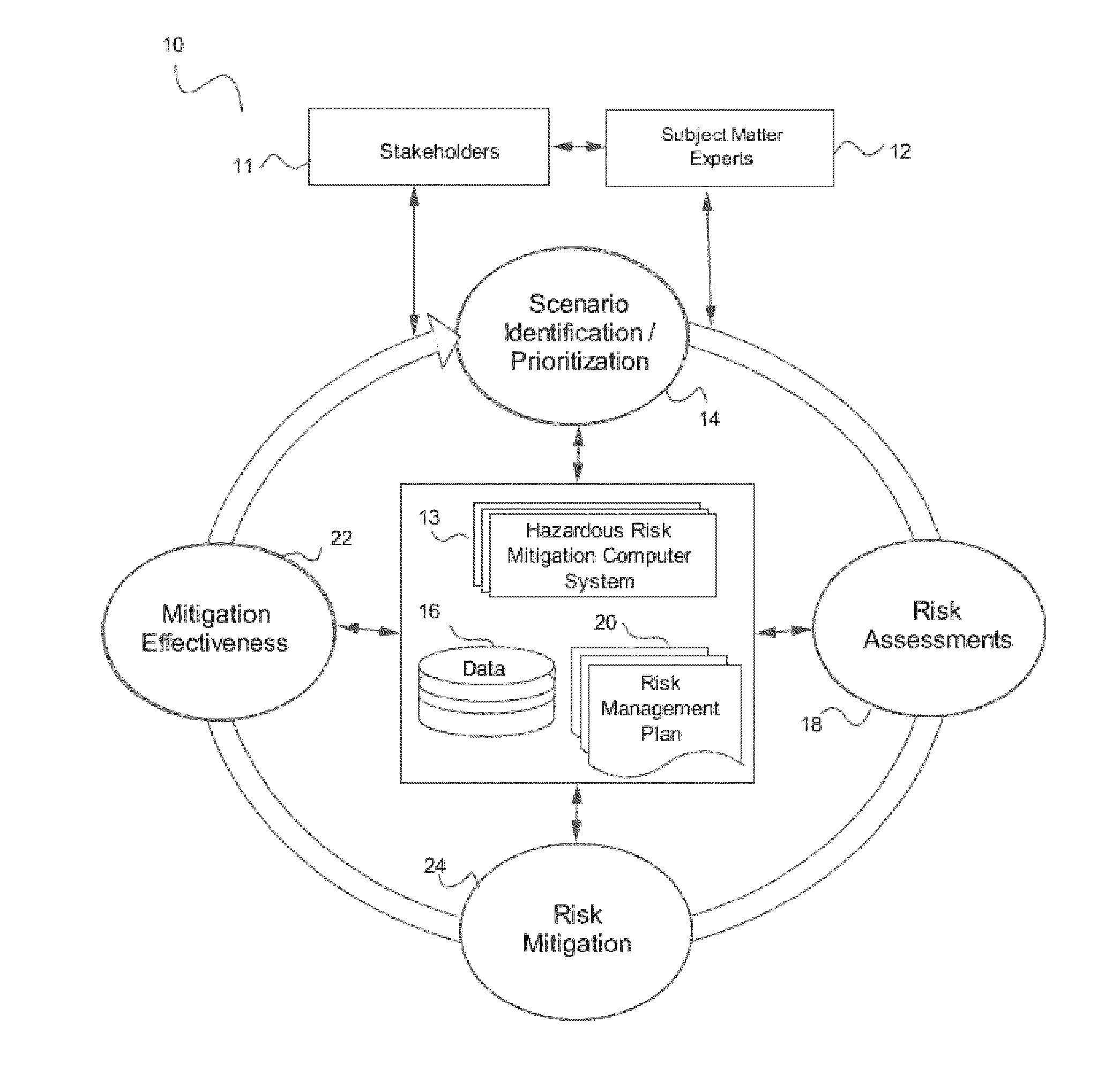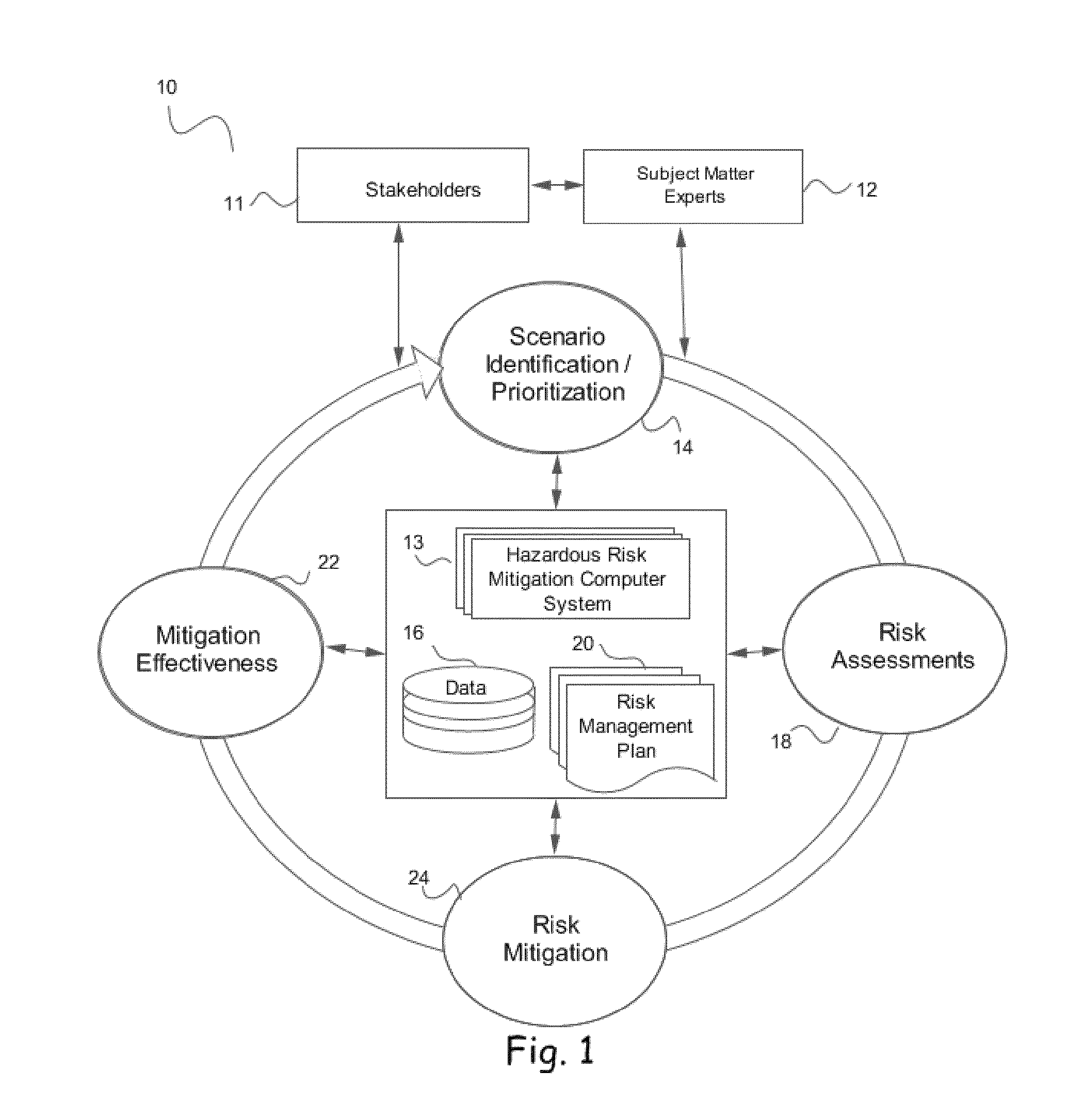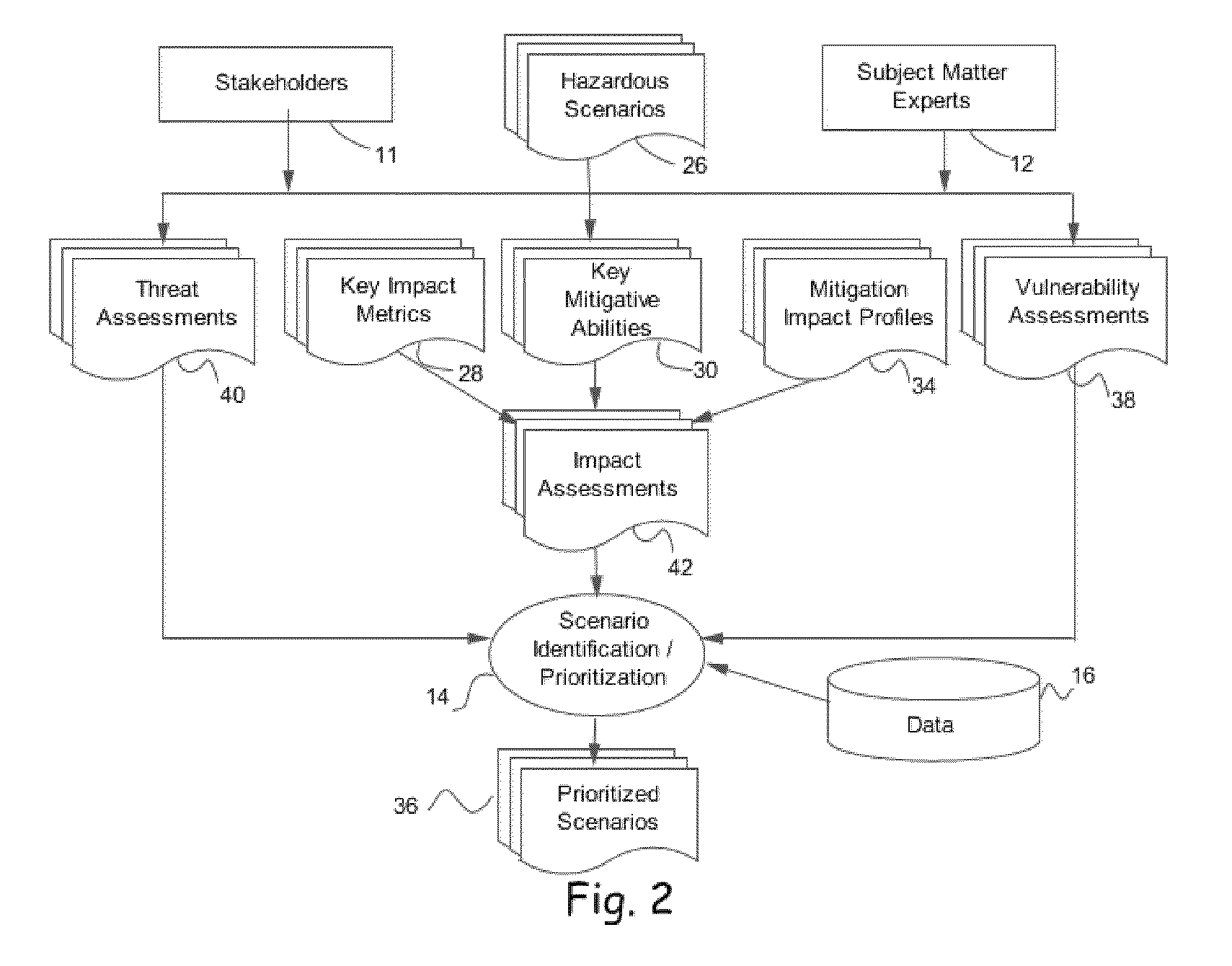System and methods for improving hazardous incident prevention, mitigation and response
a technology of incident prevention and mitigation, applied in the field of business practice and management, can solve the problems of unreported, food supply is particularly vulnerable to such hazardous incidents, and illnesses are typically increased very quickly, but then die off quickly, and achieve the effect of reducing the impact of attacks on the system
- Summary
- Abstract
- Description
- Claims
- Application Information
AI Technical Summary
Benefits of technology
Problems solved by technology
Method used
Image
Examples
Embodiment Construction
For the purpose of this invention the term “scenario” is used to mean an outline or description of a potential incident whereby a specified type of target may be harmed by a specified form of hazardous incident. The terms “stakeholder” and “stakeholders” refers to the person or collection of people and organizations that are responsible for any of the activities required to effectively mitigate the impact of any such scenario. The term “Key Impact Metric” of a specific type of hazardous incident is used herein to mean the standard unit of measurement of a particular form of adverse impact of the incident that is considered by the stakeholders to be important in assessing the total impact of that incident.
Many different factors may affect the total impact on an incident, however not all of these factors can be changed by mitigative actions on the part of the stakeholders. The term “Key Mitigative Ability” is used herein to mean any ability related to a specific type of hazardous inci...
PUM
 Login to View More
Login to View More Abstract
Description
Claims
Application Information
 Login to View More
Login to View More - R&D
- Intellectual Property
- Life Sciences
- Materials
- Tech Scout
- Unparalleled Data Quality
- Higher Quality Content
- 60% Fewer Hallucinations
Browse by: Latest US Patents, China's latest patents, Technical Efficacy Thesaurus, Application Domain, Technology Topic, Popular Technical Reports.
© 2025 PatSnap. All rights reserved.Legal|Privacy policy|Modern Slavery Act Transparency Statement|Sitemap|About US| Contact US: help@patsnap.com



